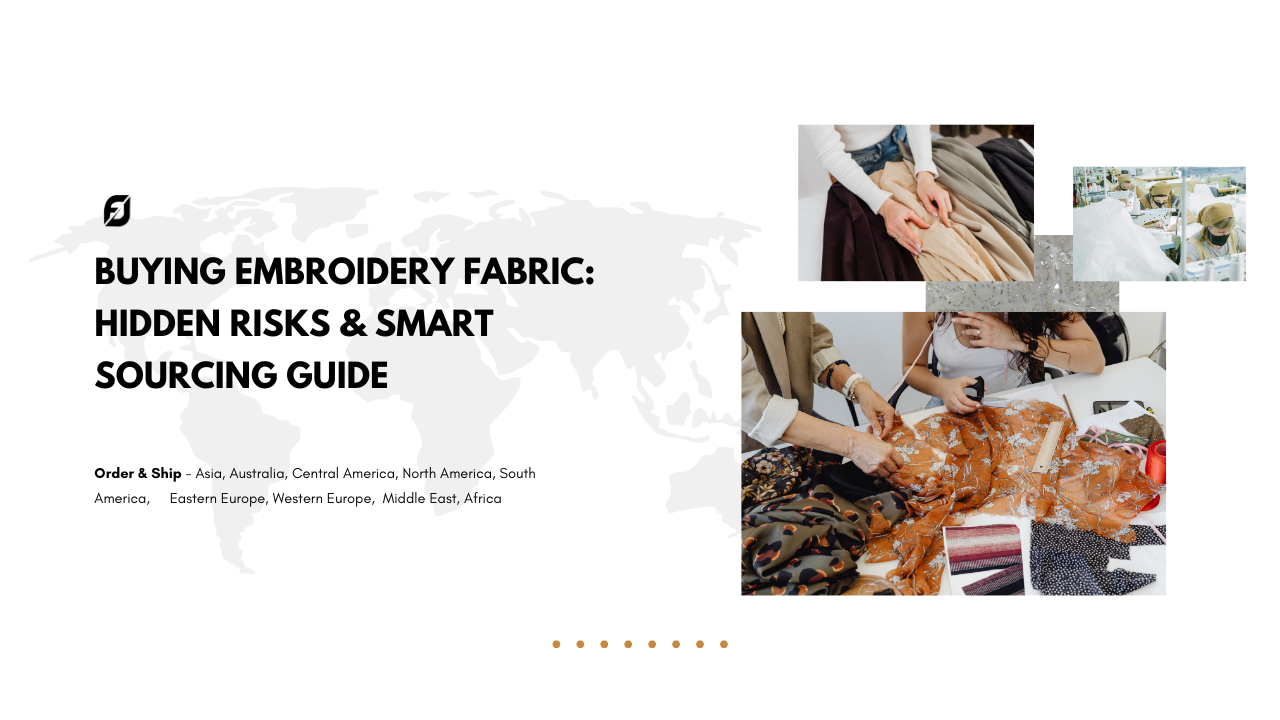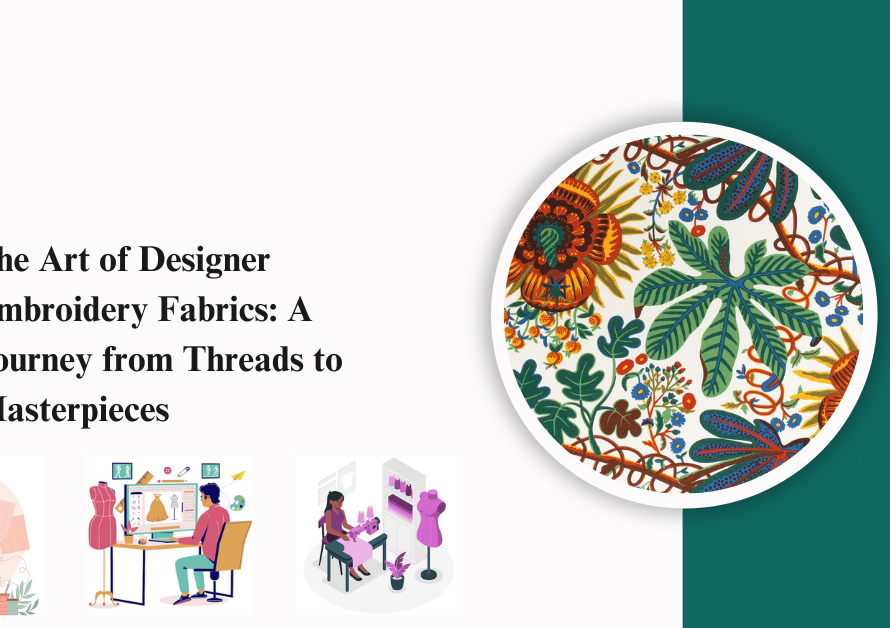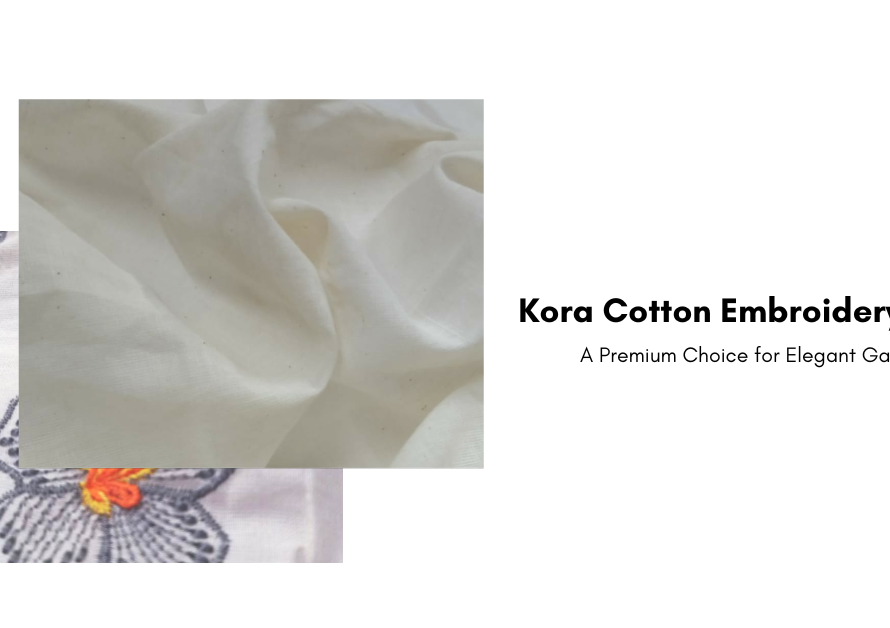In the heart of the Middle East, amidst the bustling markets and ancient cities, lies a treasure trove of tradition woven into every stitch of fabric.
Embroidery, with its intricate patterns and vibrant colors, serves not only as a form of decoration but also as a profound symbol of cultural identity and heritage. Let us embark on a journey through the rich tapestry of MiddleEastern embroidery fabric, where each thread tells a story of resilience and tradition.
Embroidery fabric in Middle east Countries
A Tapestry of Tradition
Across the diverse landscape of the Middle East, from the shores of Bahrain to the deserts of Yemen, embroidery has long been a cherished art form. Here, garments are not just clothing but canvases for expression, adorned with motifs that echo centuries of tradition. In countries like Iraq, Lebanon, and Jordan, the art of embroidery flourishes, each stitch a testament to the skill and creativity of generations past.

Symbolism Woven in Thread
In the intricate patterns of Middle Eastern embroidery, symbolism abounds. Motifs often carry deep meaning, reflecting social status, marital ties, and regional affiliations. For example, in Palestine, the art of “tatreez” speaks volumes about identity and heritage, with geometric patterns conveying stories of resilience and resistance. Similarly, in Syria, motifs drawn from folklore and history adorn garments, weaving tales of a rich cultural tapestry.
Diversity in Design
One of the most striking aspects of Middle Eastern embroidery is its diversity. Each country boasts its own unique styles, techniques, and materials, passed down through generations of artisans. From the delicate silk threadwork of Iran to the bold and colorful stitching of Saudi Arabia, the region showcases a kaleidoscope of textures and designs.
A Global Appreciation
In recent years, Middle Eastern embroidery fabric has transcended borders, gaining international recognition for its beauty and craftsmanship. Designers and fashion houses around the world have been captivated by its allure, incorporating elements of Middle Eastern embroidery into their collections. Yet, amidst this global appreciation, it’s essential to honor the cultural significance embedded within each stitch.

Preserving Heritage, Celebrating Diversity
As we marvel at the intricate beauty of Middle Eastern embroidery fabric, let us not forget the stories, traditions, and craftsmanship woven into every thread. For many communities in the Middle East, embroidery is more than just an art form – it is a bridge to the past, a symbol of resilience in the face of change. By preserving and celebrating this rich cultural heritage, we pay homage to the diversity and strength of the people who call the Middle East home.
Middle Eastern embroidery fabric is more than just fabric – it is a living testament to the enduring spirit of tradition and craftsmanship. As we continue to admire its beauty, let us also honor the stories and heritage that it carries, weaving together the threads of past and present into a vibrant tapestry of culture and identity.
_________________________
1. What is the significance of embroidery fabric in Middle Eastern culture?
Embroidery fabric holds immense cultural significance in the Middle East, serving as a visual language that communicates tradition, identity, and heritage. For centuries, intricate embroidery has adorned garments worn by both men and women, reflecting the rich tapestry of Middle Eastern culture. Beyond mere decoration, embroidery conveys social status, marital ties, and regional affiliations, making it an integral part of everyday life in the region.
2. What are some common motifs and patterns found in Middle Eastern embroidery?
Middle Eastern embroidery boasts a rich array of motifs and patterns, each with its own symbolic meaning and cultural significance. From geometric designs in Palestine’s “tatreez” to motifs drawn from folklore and history in Syria, the region’s embroidery reflects a diverse range of influences. Common motifs include floral patterns, arabesques, and symbols representing aspects of nature, spirituality, and daily life.

3. How does Middle Eastern embroidery vary across different countries?
Middle Eastern embroidery exhibits remarkable diversity across different countries, with each nation boasting its own unique styles, techniques, and materials. For example, Iran is known for delicate silk threadwork, while Saudi Arabia favors bold and colorful stitching using wool or cotton. These variations are influenced by factors such as local customs, traditions, and historical influences, resulting in a rich tapestry of regional styles.
4. What is the cultural significance of embroidery in Palestine and Syria?
In Palestine, embroidery, known as “tatreez,” carries deep cultural and symbolic meaning, often symbolizing aspects of Palestinian identity and heritage. Similarly, in Syria, embroidery is deeply ingrained in the cultural fabric, with motifs reflecting the country’s rich history and folklore. Both countries use embroidery as a form of expression and connection to their past, weaving stories of resilience and tradition into every stitch.
5. How has Middle Eastern embroidery gained international recognition?
In recent years, Middle Eastern embroidery has gained international recognition for its beauty and craftsmanship. Designers and fashion houses around the world have incorporated elements of Middle Eastern embroidery into their collections, celebrating the rich cultural heritage of the region. This global appreciation has helped to showcase the talent and creativity of Middle Eastern artisans on a worldwide stage.
6. What are some common materials used in Middle Eastern embroidery?
Middle Eastern embroidery utilizes a variety of materials, including silk, wool, cotton, and metallic threads. These materials are chosen for their durability, texture, and ability to hold intricate designs. Additionally, embellishments such as beads, sequins, and pearls are often incorporated to add dimension and sparkle to the finished piece.
7. How does embroidery fabric reflect social and marital status in the Middle East?
Embroidery fabric in the Middle East can reflect social and marital status through the complexity and intricacy of the designs. Wealthier individuals may wear garments adorned with elaborate embroidery as a display of their affluence, while simpler designs may be indicative of more modest means. Additionally, certain motifs and patterns may be associated with specific marital statuses or stages of life, serving as a visual marker within the community.
8. What role does embroidery play in preserving cultural heritage in the Middle East?
Embroidery plays a vital role in preserving cultural heritage in the Middle East by serving as a tangible link to the past. Through the continuation of traditional techniques and motifs, artisans honor the customs and traditions of their ancestors, ensuring that centuries-old practices are passed down to future generations. Embroidery also fosters a sense of pride and connection to one’s heritage, reinforcing cultural identity in an ever-changing world.
9. How can individuals appreciate and support Middle Eastern embroidery craftsmanship?
Individuals can appreciate and support Middle Eastern embroidery craftsmanship by learning about its cultural significance and history. By purchasing embroidered garments or handmade items from local artisans, individuals can directly support the preservation of traditional crafts and empower communities to thrive economically. Additionally, sharing stories and showcasing the beauty of Middle Eastern embroidery helps to raise awareness and appreciation for this timeless art form.






